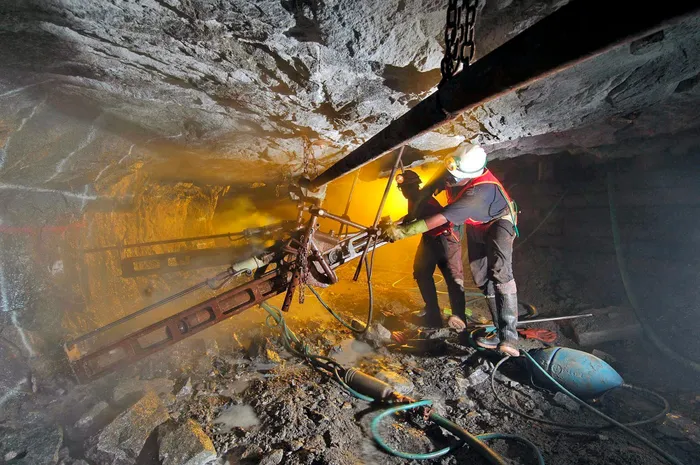SA mining activity rebounds in April on suspension of load shedding

According to the World Platinum Investment Council, global demand for platinum rose in the first quarter of the year, supported by an uptick in jewellery demand and growth in the automotive sector, but the sector continues to face a number of challenges. SUPPLIED.
Mining activity in South Africa is expected to continue on an upward trajectory for the better half of this year after rebounding at the beginning of the second quarter.
Data from Statistics South Africa (StatsSA) yesterday showed that mining production rose 0.7% year-on-year in April, rebounding from a downwardly revised 4.8% fall in March, buoyed by the suspension of load shedding and progress being made at the ports.
This could also mean that mining could contribute positively to the second quarter’s real gross domestic growth (GDP) after being one of the three productive sectors, including manufacturing and construction, that dragged growth to 0.1% in the first quarter.
StatsSA said the largest positive contributors were platinum group metals (PGMs), chromium ore and other non-metallic minerals.
According to the World Platinum Investment Council, global demand for platinum rose in the first quarter of the year, supported by an uptick in jewellery demand and growth in the automotive sector, but the sector continues to face a number of challenges.
However, StatsSA said eight of the 12 mineral categories included in the index contracted when compared to the same period last year, preventing a larger lift in April’s reading.
StatsSA’s principal survey statistician, Juan-Pierre Terblanche, production continued to fall for iron ore, manganese ore, gold and coal.
Gold production in South Africa dropped by 1.7% year-on-year in April, easing from a downwardly revised 4.3% decrease in March.
“The production of platinum group metals drove much of the upward momentum, increasing by 16.9%. All other minerals performed poorly, negatively affecting overall growth,” Terblanche said.
“Manganese ore recorded the largest year-on-year slump, declining by 22.5%. Gold registered its sixth consecutive month of decline, weakening by 1.7% year-on-year.”
On a month-on-month basis, season-adjusted mining production improved by 0.8% in April compared with March.
This followed a month-on-month decline of 4.4% in March 2024 and a 5.2% increase in February.
FNB senior economist, Thanda Sithole, said the outcome of the April mining print was encouraging, despite the limited rebound in mining output at the start of the second quarter.
Sithole said that along with the strong manufacturing output growth of 5.2% month-on-month and 5.3% year-on-year in April, this supported FNB’s view that GDP likely rebounded in the second quarter after a mild quarterly decline in the first quarter.
“Mining output is up by 0.6% year-to-date, and we remain cautiously optimistic about positive growth this year after the sector experienced annual contraction in the past two years,” Sithole said.
“This optimism is grounded on expectations of a stable global growth environment and notable improvements in the domestic energy sector. Despite some improvements in freight rail, persistent inefficiencies in ports and rail network industries remain a significant constraint on the sector’s productivity and profitability.”
In the three months ended April, Stats SA said seasonally adjusted mining production slightly rebounded to 0.1% compared with the previous three months.
Investec economist Lara Hodes said the government needed to address all the bottlenecks that were hampering the mining sector for it to contribute optimally to the economy.
“Domestically, the energy intensive mining sector likely benefited from a suspension in rotational load shedding during the month, however it continues to face a number of other structural challenges including a fragile water supply infrastructure which has deteriorated over the years due to lack of acceptable maintenance,” Hodes said.
“Moreover, while progress has been made with regard to easing congestion at the ports, South Africa’s logistical challenges continue to weigh on activity and export potential.”
BUSINESS REPORT